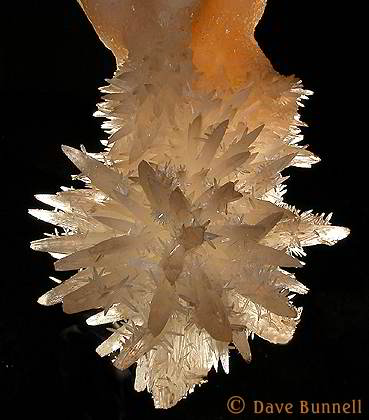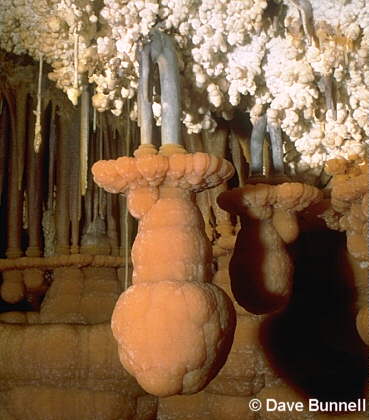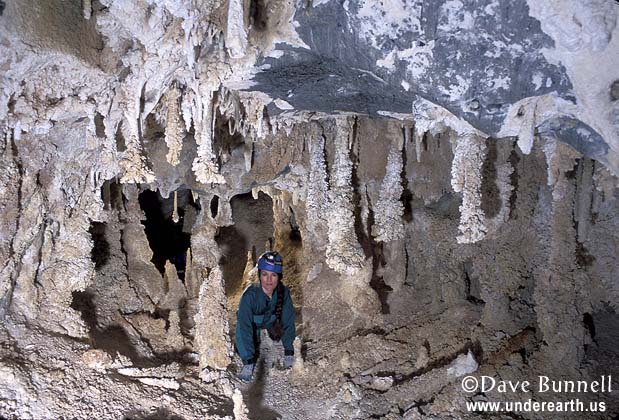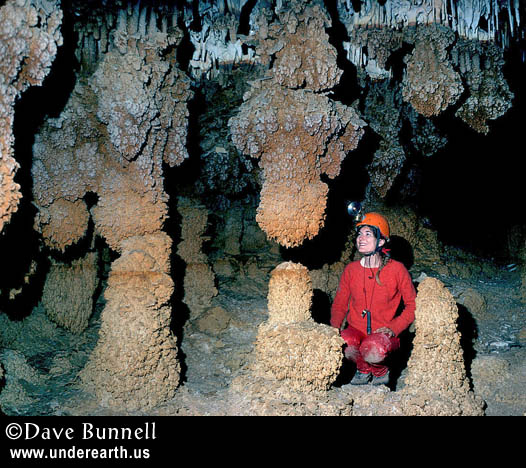
|
Bottlebrushes are formed when stalactites become immersed in a cave
pool for a long period of time. For this to occur, a change in waterflow
into the area beneath the stalactite had to occur to produce a pool.
This often accompanied changes in climate which brought more rain, such
as during the Pleistocene. Rather than continuing to grow longer, the
stalactite will become coated with pool spar if the pool is supersaturated
with calcite. The left photo shows a classic example of a bottlebrush
from a California show cave, Black Chasm Cavern. The righthand is from
Lechuguilla Cave, New Mexico, and also shows a coating formed in a subaqueous
environment, but in this instance mammilaries
rather than spar crystals have formed the coating. The two images on
the bottom show former pool basins where both stalactites and stalagmites
have become coated with spar deposits, from Nevada and New Mexico. |
![]()
 |
 |


![]()
| Back to: | |
 |
Created: June 19, 1995 Last Updated: September, 2004 Author: Dave Bunnell |